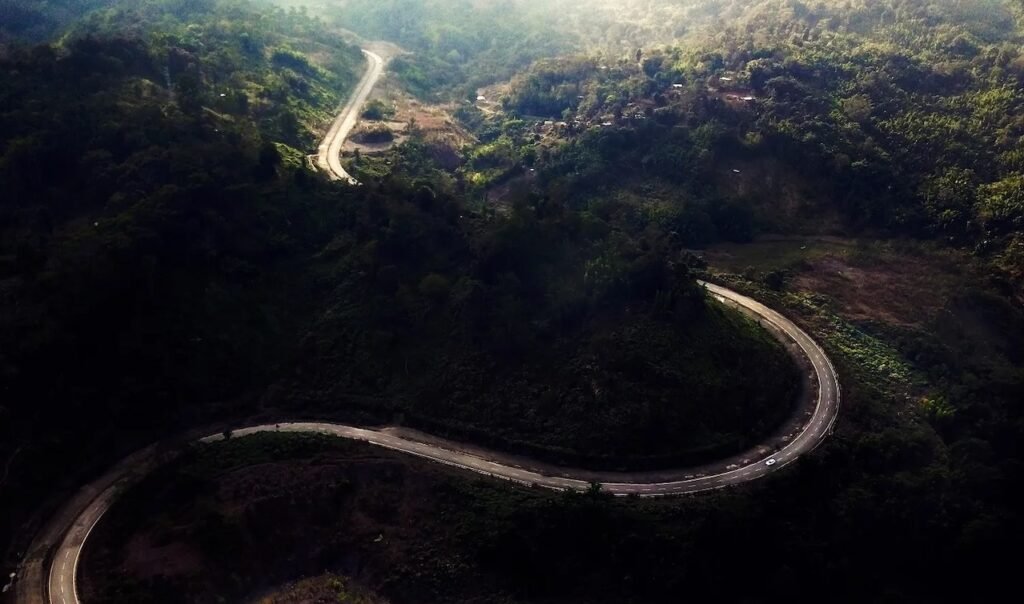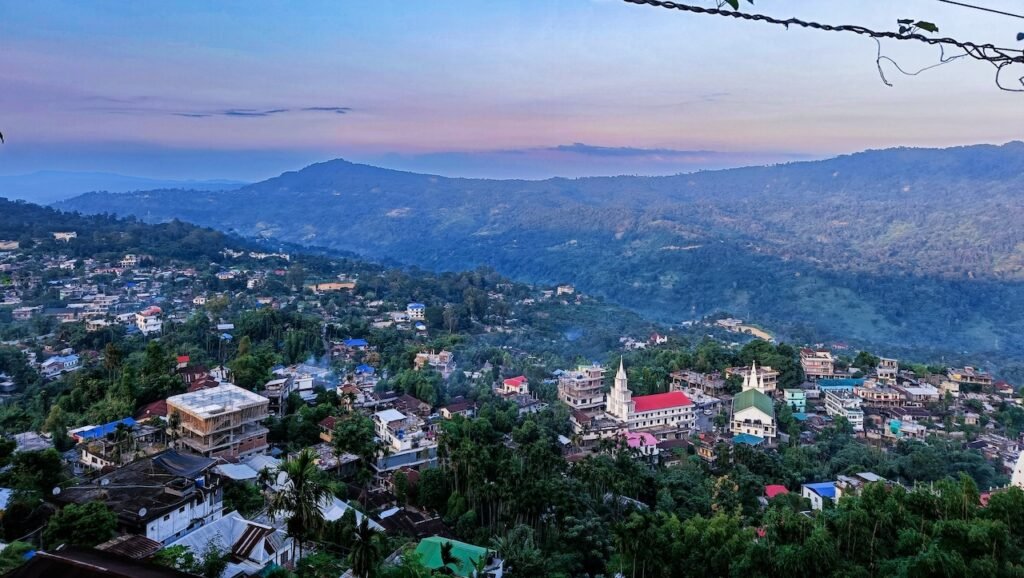Haflong is Assam’s only hill station and a unique cultural crossroads offering breathtaking landscapes, vibrant tribal heritage, historic intrigue, and a blossoming tourist economy. This article provides a comprehensive exploration of Haflong’s history, culture, tourist attractions, transportation routes, economy, and more, with detailed sections and frequently asked questions to serve as a definitive guide.
Haflong: The Gem of Assam
Haflong is a charming hill town and the headquarters of Dima Hasao district, located in the heart of northeast India. Perched at altitudes reaching 966 meters (3188 ft), it is renowned for panoramic views, lush forests, ethnic diversity, and a tranquil atmosphere that distinguishes it as the “Switzerland of the Northeast”. The name Haflong originates from the Dimasa word ‘Hafloong,’ meaning “ant hill,” and is steeped in stories from ancient indigenous kingdoms.
Historical Background
The history of Haflong dates back to its days under the Dimacha Kingdom, being later integrated into Assam after India’s independence. Historically, it was inhabited by the Dimasa people, whose vibrant traditions shaped the town’s early character. Throughout the twentieth century, Haflong emerged as an important administrative and missionary centre, with significant events like the formation of associations, churches, and an influx of diverse ethnic communities. Until late in the 20th century, Haflong was relatively obscure as a tourist spot, gaining popularity as infrastructure developed and travellers discovered its scenic charm.
Diverse Cultural Tapestry
Haflong’s culture is a beautiful mosaic representing over a dozen ethnic tribes, including Dimasa, Zeme Naga, Hmar, Kuki, Biate, Hrangkhol, Khelma, and Karbi. Traditions and festivals thrive here, with annual celebrations such as Bushu, a key farming festival, as well as Bihu, Wangala, and Domashi, each contributing unique rituals, cuisine, and dance forms like Haripivelim and Kanguibelim. Local language diversity is rich, with widespread use of Assamese, Bengali, Hindi, English, Urdu, and tribal dialects; a commonly used pidgin language bridges gaps between communities.
Food culture in Haflong is particularly enticing. Culinary delights such as fermented fish, smoked meats, silkworm chutney, and judima, an indigenous rice wine, showcase a blend of ancient traditions and modern tastes celebrated across communities.
Breathtaking Tourist Attractions
Haflong is a haven for nature lovers and adventure seekers. Here are its top sites:
- Haflong Lake: The focal point of the town, perfect for boating and relaxation, and surrounded by parks and gardens.
- Jatinga Village: Famous for the mysterious “bird suicides,” this site draws ornithologists and travellers eager to witness the natural phenomenon at sunrise.
- Haflong Hill: Offers panoramic vistas of valleys, rolling greenery, and the Borail Mountains.
- Maibong: The ancient Dimasa capital nearby, home to the historic Ramchandi Temple and unique stone structures.
- Fiangpui Church: The largest church in the area, set in tranquil surroundings.
- Panimoor Falls: A spectacular waterfall for day excursions and picnics.
- Thaiboxing Village: A window into the traditions of local tribes.
- Orchid Garden: Displays myriad exotic orchid species native to Assam.
- Bendai Baglao Waterfall: Hidden natural beauty perfect for exploration.
Getting to Haflong: Routes and Access
Haflong is accessible via road and rail:
- By Rail: The town is connected by trains on the Lumding-Silchar route. The scenic journey through hills and valleys makes the train ride especially appealing.
- By Road: Located about 345 km from Guwahati and 80 km from Silchar, Haflong is reachable by car or bus. Well-developed roads weave through forests and hills, offering picturesque travel experiences.
- By Air: The nearest airports are in Silchar and Guwahati, from which travellers continue by road or rail.

Economic Profile and Revenue
As the administrative centre of Dima Hasao district, Haflong’s economy is driven by government services, agriculture (especially rice, horticulture, and tea), tourism, and handicrafts. The industrial profile shows gradual growth, with hundreds of registered units over decades contributing to employment and investments. Tourism revenue is increasingly vital as Haflong attracts domestic and international visitors for eco-tourism, adventure sports, and cultural exploration.
Revenue Circle code for Haflong is 02093, highlighting its administrative importance and the collection of several villages under its jurisdiction. The region’s development blocks and revenue circles facilitate social and economic upliftment, as well as infrastructure development.
Location and Climate
Haflong sits in Dima Hasao district, Assam, at 966 meters above sea level, characterised by lush green forests, hills, and temperate climates. The climate is pleasant throughout the year, with cool winters and monsoon rains, ideal for tourism and outdoor activities.
FAQs About Haflong
Where is Haflong located?
Haflong is situated in the Dima Hasao district of Assam, at an altitude of 966 meters.
What makes Haflong unique among Indian towns?
Haflong is the only hill station in Assam, featuring a rare blend of tribal cultures, panoramic landscapes, and mysterious bird phenomena at Jatinga.
Which tribes live in Haflong?
The town is home to Dimasa, Zeme Naga, Hmar, Kuki, Biate, Hrangkhol, Khelma, Karbi, and other tribes, each with distinct customs and festivals.
How do travellers reach Haflong?
Haflong is accessible by rail (Lumding-Silchar line), road from Guwahati and Silchar, and nearby airports at Silchar and Guwahati.
What are the must-visit tourist spots in Haflong?
Haflong Lake, Jatinga Village, Haflong Hill, Maibong, Fiangpui Church, Panimoor Falls, Orchid Garden, and Bendai Baglao Waterfall are key attractions.
What is unique about Haflong’s food?
The town excels in indigenous dishes like fermented fish, smoked meat, silkworm chutney, and judima rice wine, reflecting tribal culinary heritage.
How is Haflong’s revenue generated?
Revenue primarily comes from administration, agriculture, tourism, and handicrafts, with steady growth in the industrial and service sectors.
Is Haflong suitable for eco-tourism and adventure?
Yes, the area offers trekking, paragliding, camping, bird watching, and sustainable tourism activities amid pristine natural settings.
Haflong in the Future
Modern Haflong is evolving as an offbeat destination for eco-tourism, digital nomadism, and adventure sports, with increasing infrastructure and local hospitality. As connectivity and awareness grow, Haflong continues to blend the allure of its cultural traditions with contemporary trends. Annual festivals and the preservation of tribal customs have ensured that the town remains a beacon of unity and diversity in northeast India.

